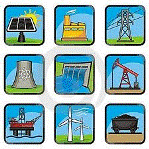Department of Agricultural Economics: Undergraduate Research
Date of this Version
Fall 12-23-2017
Document Type
Article
Citation
Op-Ed from ENSC 230. Energy and the Environment: Economics and Policy, University of Nebraska-Lincoln, Department of Agricultural Economics, Fall 2017
Abstract
The potential demolishing of the Clean Power Plan by the federal government in early October is looking like a losing fight in our war against carbon emissions at one of the biggest sources of these emissions. But we can continue to fight in this war and make an even bigger impact by focusing our efforts on the most ordinary and consistent thing in our modern lives; the buildings we live and work in. Some would say that high efficiency or green buildings are a commodity that only the wealthy individuals or businesses can achieve, but this doesn’t have to be the case anymore. Over recent years, the technology to achieve these green buildings, or even retrofit an existing building for greater efficiency, have become cheaper but with more effort these green buildings can become the new standard in the near future. According to the US Energy Information Administration, the commercial and residential sectors can be combined to show the buildings sector uses 40% of the country’s total CO2 emissions and annual energy consumption, making it the largest polluting and energy consuming sector. This is where green buildings come to save the day. Green buildings have shown to have an average of 34% lower CO2 emissions and consume 25% less energy. Some businesses and home-owners go even further toward eliminating energy consumption completely, where the building is producing as much energy as it consumes through renewable resources making it net zero energy. The higher upfront cost of green buildings have been the major contribution to their luxury label. According to the US Green Buildings Council, green buildings and homes have been found to pay of themselves in about seven years through lower maintenance and energy costs than typical buildings and homes of the same size and have experienced an average increase in property value of 4%. Studies have also shown that most employees at green buildings have a higher satisfaction at work and higher productivity as an additional benefit to green buildings. Recent advances in technology have led to reduced prices in solar panels, high efficiency insulation, geothermal heat pumps, and many more smart controls that have slowly risen the number of green buildings. But in order to have the effect we need for the future, green buildings need to be the standard and not a luxury. The government has taken steps to help businesses and people take move toward modernizing their buildings and homes with small incentives, loan programs, and tax credits but the future needs more than that. The federal government needs programs that allow states to setup their own way to specialize the kind of incentives their people need to be most efficient in their area. Modernized building codes and standards need to be implemented to bring the bar up higher for the US. California has been the leader in updating their codes and standards to being more efficient and has kept their energy consumption per capita relatively flat over the past three decades as the US average rose nearly 50%. Businesses should be required to have the ability to produce an energy assessment of their building on demand and have public data of building efficiencies. This would create accountability and competition to be more efficient while helping themselves understand what is going on in their building as well as the people working to help them improve. The government should allow utilities the opportunity to invest and support building efficiency as they work to modernize our aging grid. Most people think that the more energy that people use then the more money utility companies get but if more energy is used than utility companies will be forced to meet the higher demand by continuing to add costly new power plants. Implementation of these ideas would help to get people interested in the energy efficiency of their homes and buildings that they work in, stimulate the market for technologies that are needed for these buildings, and allow more freedom for innovation in utility companies and building design. To keep up our fight for a better, cleaner future, building efficiency has proven to be a big key that often gets overlooked. Unlike changes to power plants, the changes to these buildings will be change that we can see and feel every day that will have an impact on us and our wallets for the future.
Included in
Environmental Indicators and Impact Assessment Commons, Natural Resources and Conservation Commons, Oil, Gas, and Energy Commons, Other Environmental Sciences Commons


